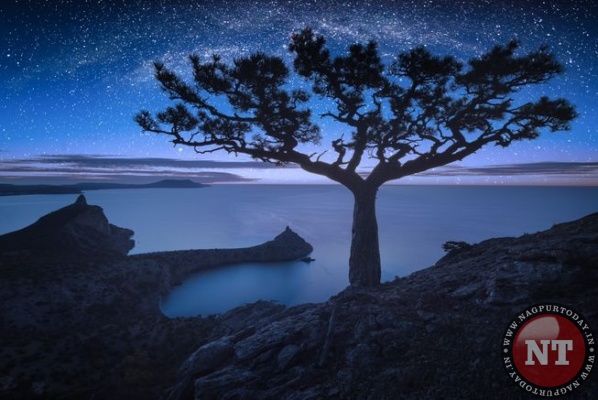Today, 22nd April is celebrated as ‘Earth Day’ by more than 93 countries of the world.

On April 22nd 2016, the the landmark Paris Agreement was signed by USA, China and some 120 other countries. This signing satisfied a key requirement for the entry into force of the historic draft Climate Protection Treaty adopted by consensus of the 195 nations present at the 2015 Treaty on the subject in Paris itself.
What would Earth be without trees?
Most definitely Earth as we know it would not exist without trees.
Trees are not just the oldest ‘life’ on Earth, having existed for millions of years. In fact their debut more than 300 million years ago was a turning point for Earth, helping transform its surface into a bustling utopia for animals of all kinds – birds, reptiles, mammalians and micro organisms. Trees have fed, housed and otherwise nurtured countless creatures over time, including our own ancestors!
The oldest living tree today is 5000 years old – yes, trees can, if left alive by man, live for hundreds of years, offering increasing shade to us and ‘home’ to many avians without expecting much in return. Trees that grow naturally do not expect much from us, not even water!
Modern humans rarely live in trees, but that doesn’t mean we can live without them. About 3 trillion trees currently exist, enriching habitats from old-growth forests to city streets. Yet despite our deep-rooted reliance on trees, we tend to take them for granted. People clear millions of forested acres every year, often for short-term rewards despite long-term risks like desertification, wildlife declines and climate change. Science is helping us learn to use trees’ resources more sustainably, and to protect vulnerable forests more effectively, but we still have a long way to go.
Declining tree cover
Earth now has 46% less trees than it did 12,000 years ago, when agriculture was in its infancy. Trees were cut down first for growing food, but later they began being felled for everything – to build our villages and cities, to build highways and roads, and later still to get at the ‘mineral wealth’ hidden below the earth’s surface – that exists mainly because of the trees themselves!
Astounding ways in which trees benefit us
The canopies of trees act as a physical filter, trapping dust and absorbing pollutants from the air. Each individual tree removes up to 1.7 kilos every year. They also provide shade from solar radiation and reduce noise.
Trees absorb carbon dioxide as they grow and the carbon that they store in their wood helps slow the rate of global warming.
They reduce wind speeds and cool the air as they lose moisture and reflect heat upwards from their leaves. It’s estimated that trees can reduce the temperature in a city by up to 7°C.
Trees also help prevent flooding and soil erosion, absorbing thousands of liters of storm water.
Trees make us healthier
As anyone visiting forests for holidays may have noticed, within minutes of being in an environment surrounded by trees, our blood pressure drops, we feel happier and calmer. Probably that is why trees hold a unique symbolism in many religions, cultures and countries. Think of our local festival of Vat Savithri where women tie threads around the Banyan – Vad- tree!
Many trees are medicinal and their extracts offers cures for many diseases and illnesses, including cancer.
The Tree Census
Until recently, there was no thorough global census of tree species. But in April 2017, the results of a “huge scientific effort” were published in the Journal of Sustainable Forestry, along with a searchable online archive called GlobalTreeSearch.
The scientists behind this effort compiled data from museums, botanical gardens, agricultural centers and other sources, and concluded there are 60,065 tree species currently known to science. These range from from Abarema abbottii, a vulnerable limestone-bound tree found only in the Dominican Republic, to Zygophyllum kaschgaricum, a rare and poorly understood tree native to China and Kyrgyzstan.
Next up for this area of research is the Global Tree Assessment, which aims to assess the conservation status of all of the world’s tree species by 2020.
Lots more can be written about trees, but today let’s begin by appreciating all that a tree has to offer and let us pledge to at least save the trees we have if not plant new.
And next time you go to Pench or Tadoba, don’t waste all your energy looking for the devious tiger; why not look at the trees and appreciate them also?
… Sunita Mudaliar -Executive Editor












